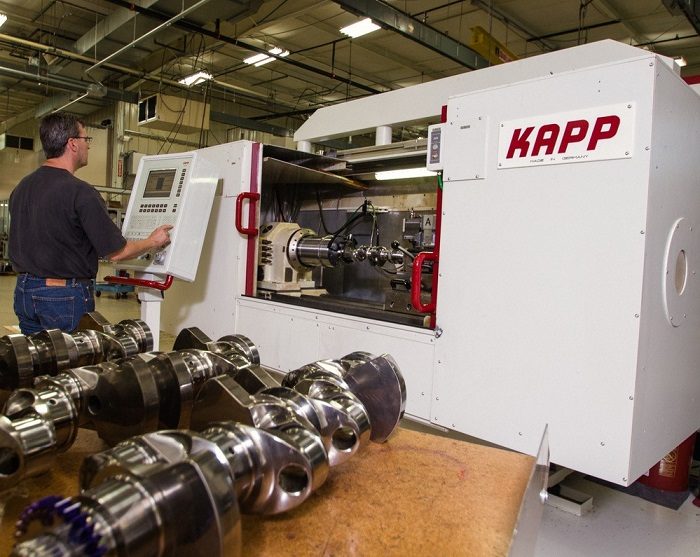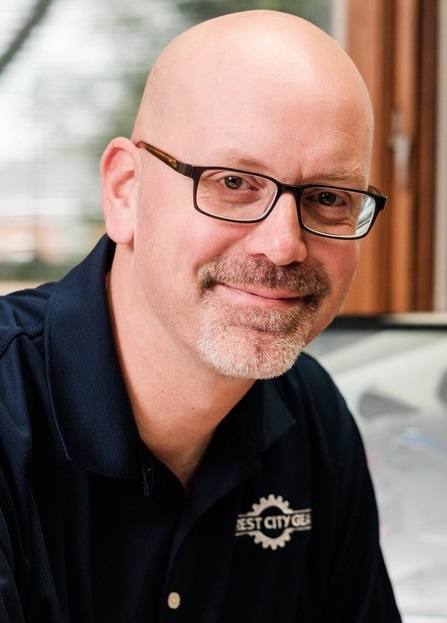
State of the Gear Industry Perspectives: Forest City Gear
State of the Gear Industry Perspectives takes an in-depth look at the challenges and opportunities in gear manufacturing today and in the future. Our seventh installment online is an interview with Kika Young, president, and Jared Lyford, director of manufacturing operations at Forest City Gear (FCG).
 Kika Young
Kika Young Jared Lyford
Jared Lyford
What are the greatest challenges to your business in 2023?
Of course, as is the case for many of us, rising costs and protecting our profitability to ensure we avoid eroding our profit margins is our greatest challenge. Specifically, this is affecting us in several ways. Human capital is becoming more expensive as the labor market tightens; there is a shortage of skilled technical workers and a shortage of workers overall.
We are seeing our supply chain have growing issues with labor as well. Increased government oversight and regulations in areas like cybersecurity and CMMC are very expensive to implement and maintain. Orders remain strong and business is healthy, so it has become a matter of managing and mitigating these issues while growing.
What global manufacturing trends are you paying close attention to in the gear industry today?
We are watching additive manufacturing closely. This is particularly true as the quality is improving and getting closer to that of machined gears. Another indicator we are watching within the additive manufacturing realm is the material certs of these powdered metals as they relate to those of billet or a forging.
Another trend we are watching through vendors and customers is gears that are produced on non-traditional gear machines—non-dedicated equipment such as multitasking mill turn equipment. As a manufacturer, we must look at leveraging that into our own processes to remain competitive.
Lastly, automation and cobots are both considerations, but as a job shop with low volume and high mix applications, these resources are limited for our scope. We are looking at the intuitive cobots. Implementing these into our workflow is something we’re getting creative about.
How are you navigating supply chain issues, materials, shipping, lead time challenges as we head into 2023? Are things getting better or worse post-pandemic in these areas?
Due to our customer base, we are large in part mandated to our customers’ restrictions and approved supplier lists. This restricts our ability to take control of our supply chain and vendor management to the extent we would like.
A few years ago, we made a conscious effort to exit from customer LTAs that had restrictive pricing pass-throughs and certain covenants. This has proven to be very fortuitous, as we have been able to pass through increased prices for materials and special processing to our customers.
Lead time is delicate and difficult with customers, oftentimes due to their own labor issues and shortages. We are as proactive as possible with our vendors regarding lead time, giving as much visibility as possible and providing POs to “get in line.” Of course, the most advantageous way to navigate these issues is by simply fostering good relationships and providing good communication with both our customers and our vendors.
Unfortunately, we would say that overall supply chain issues are not improving post pandemic. The supply chain is struggling as the volume ramps up post pandemic, with commercial aerospace the primary driver for us here at FCG. Scaling the supply chain back up has been cumbersome given the widespread shortage of human capital.
What is the state of your business regarding training and developing your skilled workforce internally and the state of finding skilled workers to join the organization?
For decades, FCG has felt that investment in our workforce is a central tenet to our success. Through COVID shutdowns, we were unable to focus the resources we historically have on training. Mid-2022, we reinvigorated our approach to this. Of course, we take advantage of AGMA continuing education classes, the Gleason Gear School, Helios Gear School, the National Tooling & Machining Apprenticeship Program, and many local training programs; however, we find that “growing our own” is typically better than trying to find skilled workers to bring in. Of course, this approach has a much longer lead time and investment cycle and is not a quick fix. FCG is forecasting some exciting growth over the next three years and staffing is our greatest threat to slowing that growth.
What role is sustainability and green manufacturing playing in your organization in 2023?
Green manufacturing and generally being kind to the earth were core values to Fred long before they were mainstream. We continue this legacy today, not because of political reasons or societal pressure, but because we believe it is important for our children and the ethical thing to do as a company. We switched to high-efficiency lighting 10 years ago and continue to update this. We tint our windows with low-E film to reduce electricity consumption. We have large high-efficiency fans to circulate the air, and we have increased ceiling insulation throughout the plant. We have replaced low-efficiency air compressors with high-efficiency models. We strategically planted shade trees, fruit trees, shrubs and plants around the building to reduce A/C demand and foster wildlife. We installed our Oberland oil filtrate/cooling unit for gear grinding, using outside air for chilling the oil anytime ambient air temperature is 50 degrees or lower.
We have seven acres of undeveloped woodlands at the back of our property. Our Reishauer and the air compressor deduct heat in the summer, and in the winter, the Reishauer heat can be kept inside with the use of a regulator to help with heating. Sensor lights, chemical regulations, spinning the oil out of chips, separating scrap metals, recycling for metal and skids, eliminating bottled water and providing filtered water throughout the plant for employees; there are hundreds of ways all of us can be kinder to the environment. This summer, we are looking at solar opportunities. Being a sustainable manufacturer is not something you should work to do for publicity and politics—we all owe it to our kids to be good stewards of their planet!
Describe the role automation/robotics plays in your business today and how these technologies will evolve in the coming years?
While cobots may prove to be applicable in our job shop setting as technology evolves, robotics and automation are only utilized in high-volume applications at this time.
How will the gear industry change and evolve in the next five years?
- Additive manufacturing
- From our perspective, the tolerances required from customers are trending higher. This places more pressure on supply chain and machine manufacturers themselves.
